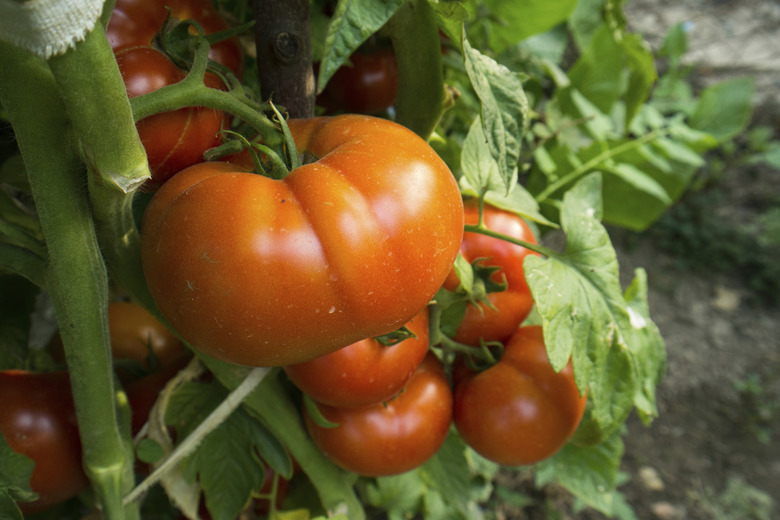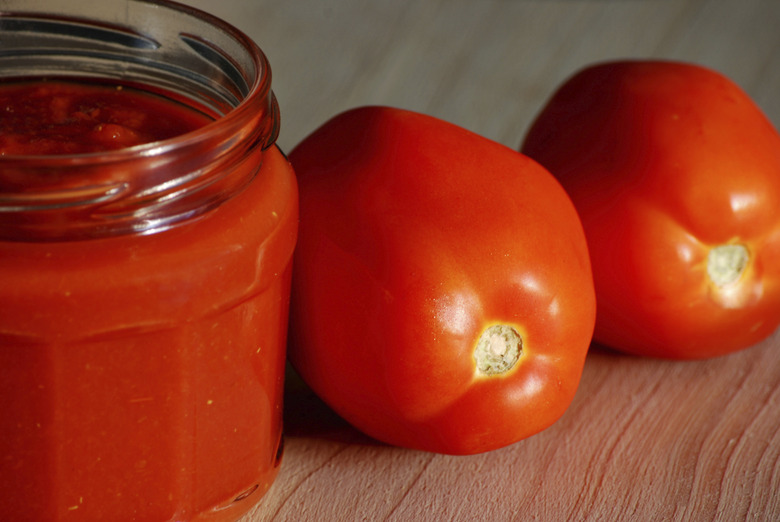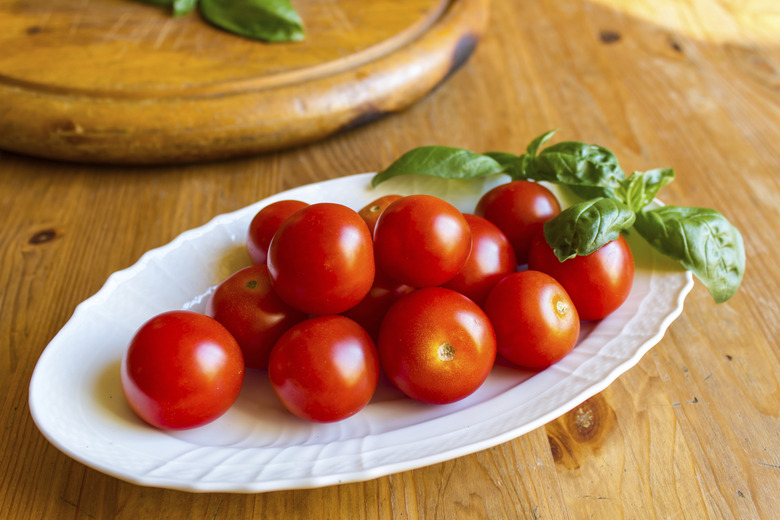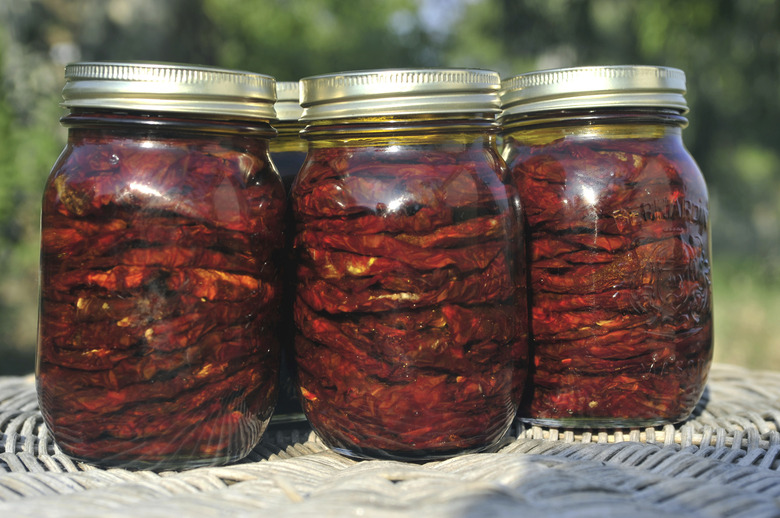Italian Tomato Varieties
Tomatoes (Solanum lycopersicum) may have originated in South and Central America, but some of their most delicious uses developed in Italy. Taken to Europe by Spanish explorers in the 1500s, tomatoes spread not only through Europe but eventually around the world. Each country developed its own cultivars, and in Italy sauce and paste tomato varieties abound. Each region developed its own specialties and often a distinct tomato best suited to those dishes. All tomatoes are perennial tender vines hardy in U.S. Department of Agriculture plant hardiness zones 10 through 11, but they're usually grown as annuals.
Step 1
Beefsteak tomatoes are large cultivars with solid, meaty flesh and are usually wider than round. They're indeterminate plants, which mean the large vines never stop growing and produce fruit all through the growing season. From the town of Belmonte in the southern toe of Italy comes "Belmonte," an heirloom, pink, fluted or ruffled iindeterminate beefsteak that ripens in 70 days and has few seeds. "Costuluto Genovese sel Valente" features red, ribbed fruits, indeterminate growth, excellent taste and matures in 75 to 80 days. With an unusual shape for a beefsteak, the indeterminate oxheart "Cuor di Bue" is shaped like the internal organ for which it's named. It's an heirloom variety that ripens in 82 days. As with all tomatoes, beefsteaks need at least six hours of sun and a rich, well-draining soil. Tomatoes require regular watering, with the soil kept moist but not soggy. Indeterminate plants need staking or tomato cages for support. Harvest fruit regularly to encourage fruit formation.
Step 2
- Beefsteak tomatoes are large cultivars with solid, meaty flesh and are usually wider than round.
- They're indeterminate plants, which mean the large vines never stop growing and produce fruit all through the growing season.
Sauce Varieties
Step 1
To get that smooth, thick texture of a favorite Italian marinara sauce, start with tomatoes that are less juicy and have fewer seeds. Italian examples are "San Marzano," an indeterminate, heirloom, elongated red tomato developed for Napolitano cuisine. Fruits ripen in 80 days and feature a complex, rich taste. A determinate plum tomato from southeastern Italy, "Fiaschetto di Manduria" grows in an oval shape with a pointed end. Bearing in 80 days, it's a heavy producer and a determinate variety. A determinate tomato stops growing when the branches set fruit, bearing only one crop of tomatoes that ripen at the same time.
Small Tomatoes
Step 1
An example of a small, early-bearing tomato, "Italian Red Cherry" bears in 65 days on a determinate plant. Suitable for container growing, the fruits are very sweet. With a diminutive pear shape, "Re Umberto" was named for Italian King Umberto in 1878. The red heirloom variety matures in 75 days on indeterminate plants. Italians pick whole bushes in fall and hang them indoors to ripen during the winter. Fruits are 1 to 2 ounces and are also used in cooking.
Step 2
- To get that smooth, thick texture of a favorite Italian marinara sauce, start with tomatoes that are less juicy and have fewer seeds.
- Italian examples are "San Marzano," an indeterminate, heirloom, elongated red tomato developed for Napolitano cuisine.
Dried Tomatoes
Step 1
The tomato customarily used for sun-dried tomatoes throughout Italy, "Principe Borghese" is determinate, forming ripe fruit in 70 to 75 days. Its small, grape-shaped fruit have a rich taste and are used fresh and for sauces and paste. A traditional drying method is to pick the bush and hang it in the sun to dry the tomatoes on the vine.



